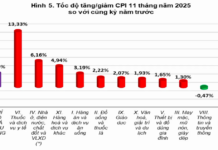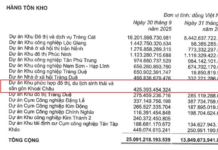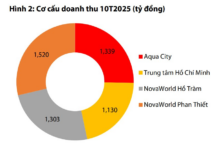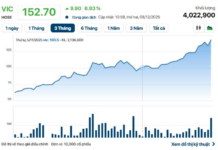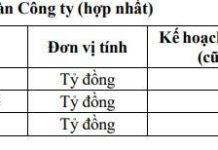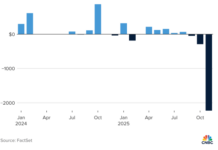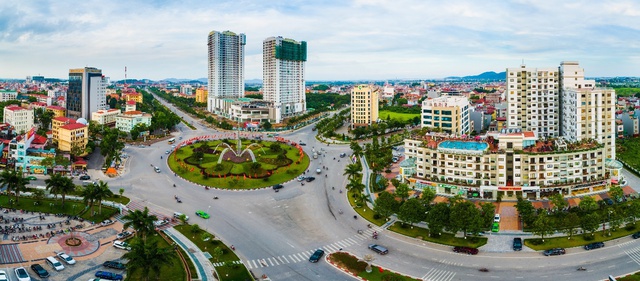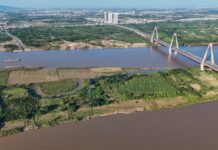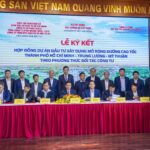FDI Catalyzes Thai Binh’s Future Growth: Unlocking New Doors to Industrial Development
Thai Binh has witnessed a remarkable surge in FDI attraction, with a total registered capital of over $3 billion in 2023, propelling the province into the prestigious “Billion Dollar Club.” This achievement has positioned Thai Binh among the top five destinations for FDI in Vietnam. By leveraging its inherent advantages and diligently preparing the necessary infrastructure, land, and human resources, Thai Binh has become a magnet for prominent FDI investors such as VSIP, ET Solar Power HongKong Limited, and Pegavision Corporation.
The Thai Binh Economic Zone, spanning 30,583 hectares and encompassing 22 industrial parks, has played a pivotal role in enhancing the region’s competitiveness. In just the first six months of 2024, Thai Binh province attracted more than $232 million in FDI, a staggering 5.7 times increase compared to the same period in 2023.
With a visionary plan for the 2021-2030 period and a long-term vision until 2050, Thai Binh is poised to become one of the key industrial development hubs in the Red River Delta region, with a particular focus on energy and high-tech industries. This strategic direction underscores the crucial role of FDI in unlocking new doors and charting a course toward modern industrial advancement for the province.
The positive trajectory of FDI in recent times has fostered high expectations for industrial hubs, especially in Thai Binh city. This influx of FDI, driven by the relocation of supply chains, will give rise to new industrial centers, attracting a multitude of experts, workers, and residents. This, in turn, will spur urbanization and create a vibrant landscape for economic, social, and commercial growth.
The transformation of Bac Ninh, a prominent industrial hub, serves as a testament to the catalytic power of FDI. Once barren lands with low agricultural productivity in Yen Phong, Que Vo, Thuan Thanh, and Tien Du have been revitalized into thriving industrial and urban areas, complete with dynamic commercial services, thanks to the influx of FDI. This metamorphosis has propelled Bac Ninh closer to its aspiration of becoming a first-class urban area and a centrally-governed city in the future.

Bac Ninh’s urban landscape transformation fueled by FDI
Given its vast development potential, Thai Binh is anticipated to emulate the success of pioneering industrial hubs, leveraging the momentum of the new FDI wave to achieve holistic and modern progress. This “fast follower” strategy positions Thai Binh to surpass its predecessors in terms of balanced and contemporary development.
Thai Binh’s Real Estate Market Flourishes with the Influx of FDI
There is a well-established correlation between FDI inflows and real estate investment trends. Consequently, the remarkable growth in FDI attraction serves as a harbinger for an imminent real estate investment boom in Thai Binh. Observing the nearly 26-fold increase in FDI over a decade since the economic restructuring, experts predict a significant transformation in the local real estate market.
This prediction is further bolstered by the real estate market dynamics in Bac Ninh and Bac Giang, which underwent a similar FDI influx. The growth of FDI in these two industrial hubs over the past decade has positively correlated with the expansion of their GRDP and the progressive transformation of their urban landscapes. Land prices in the central areas of these cities have skyrocketed by 15 to 20 times, reflecting the regions’ industrialization and urbanization, as their urban spaces underwent expansion and rejuvenation.
Thai Binh has already attracted the attention of prominent FDI investors, including Daewoo E&C, which has chosen the province for its nearly $10 billion Starlake-inspired urban project. The presence of such “FDI giants” is expected to catalyze the development of satellite businesses, fostering the evolution of infrastructure and urban areas in Thai Binh province and its capital city.
The planning of over ten large and small urban areas surrounding the central intersection of Le Quy Don and the peripheral roads in the southern part of Thai Binh city is a compelling proposition for robust real estate investment. Among these, Glory Downtown stands out as a meticulously planned project with diverse amenities and a long-term vision, capturing the interest of discerning investors.
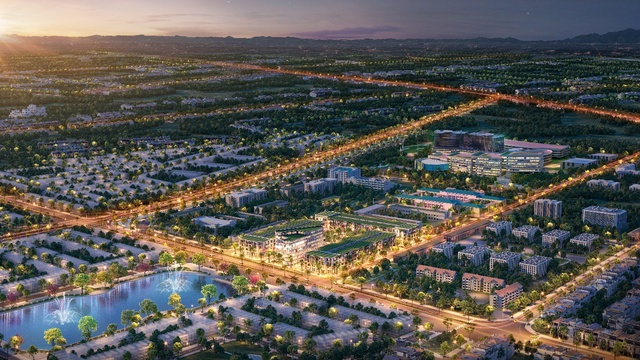
Glory Downtown’s strategic location on the Le Quy Don central intersection
Strategically located on Le Quy Don Street, Glory Downtown offers a prime location just five minutes away from the bustling city center of Thai Binh, providing convenient access to a comprehensive range of hospitals, commercial centers, and cultural and entertainment venues within a 2km radius. Additionally, the project is well-connected to vital transport links, including the southern ring road leading to Cau Nghin, the Thai Ha overpass connecting to the Cau Gie expressway, and the northern coastal expressway, making it ideally positioned to cater to the housing needs of experts and workers in the nearby industrial parks.
Beyond its advantageous location and the area’s development potential, Glory Downtown’s 128 shophouses boast robust legal foundations, with land sourced from urban auctions, ensuring long-term red books. This provides investors with a unique opportunity to capitalize on the commercial potential of their properties.
As the Thai Binh real estate market gains momentum, fueled by the promising FDI outlook and the potential for future real estate value appreciation, Glory Downtown is poised to become the new focal point in the southern part of Thai Binh city, spearheading the wave of real estate investment in the region.








